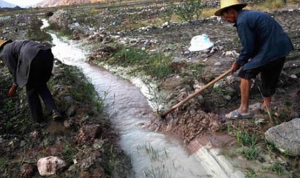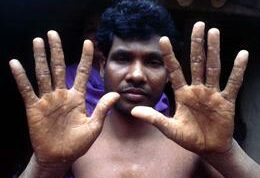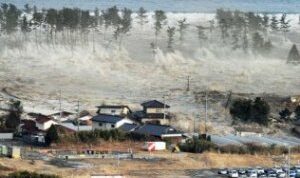 More than one billion urban residents will face serious water shortages by 2050 as climate change worsens effects of urbanization, with Indian cities among the worst hit, a study said Monday.
More than one billion urban residents will face serious water shortages by 2050 as climate change worsens effects of urbanization, with Indian cities among the worst hit, a study said Monday.
The shortage threatens sanitation in some of the world’s fastest-growing cities but also poses risks for wildlife if cities pump in water from outside, said the article in the Proceedings of the National Academy of Sciences.
The study found that under current urbanization trends, by mid-century some 993 million city dwellers will live with less than 100 liters (26 gallons) each day of water each — roughly the amount that fills a personal bathtub — which authors considered the daily minimum.
Adding on the impact of climate change, an additional 100 million people will lack what they need for drinking, cooking, cleaning, bathing and toilet use.
“Don’t take the numbers as destiny. They’re a sign of a challenge,” said lead author Rob McDonald of The Nature Conservancy, a private environmental group based near Washington.
“There are solutions to getting those billion people water. It’s just a sign that a lot more investment is going to be needed, either in infrastructure or in water use efficiency,” he said.
Currently, around 150 million people fall below the 100-liter threshold for daily water use. The average American has 376 liters delivered a day, although actual use varies widely depending on region, McDonald said.
But the world is undergoing an unprecedented urban shift as rural people in India, China and other growing nations flock to cities.
India’s six biggest cities — Mumbai, Delhi, Kolkata, Bangalore, Chennai and Hyderabad — are among those most affected by water shortages. The study forecast that 119 million people would face water shortages in 2050 in the Ganges River delta and plain alone.
With an annual monsoon, India does not lack water. But it struggles to preserve the water from the wet season to the dry season, McDonald said.
West Africa, which sees some of the world’s heaviest rainfall, will also face water shortages in cities such as Lagos, Nigeria, and Cotonou in Benin, the study found.
The study warned of threats to ecosystems if developing nations take water from elsewhere. India’s Western Ghats region, a potential source for thirsty cities, is home to nearly 300 fish species, 29 percent of which are found nowhere else, it said.
“If cities are essentially drinking rivers dry, that has really bad effects on the fish and the reptiles and everything else in the river,” McDonald said.
Instead, the study recommended reforms to agriculture — usually the top consumer of water — and improved efficiency, as nearly half of the water in some poor countries is wasted due to leaks.
“There is a lot of potential for increase in water-use efficiency in the agriculture sector, or indeed in the residential sector, to solve most of this challenge,” McDonald said.
The study said there would be a need for international funding to help poorer nations “to ensure that urban residents can enjoy their fundamental right to adequate drinking water.”
UN-led talks last year on climate change agreed on practicalities to set up a global fund to assist poor nations most hit by climate change, with a target of 100 billion dollars a year starting in 2020.
Other cities forecast by the study to face a water crunch include Manila, Beijing, Lahore and Tehran.




